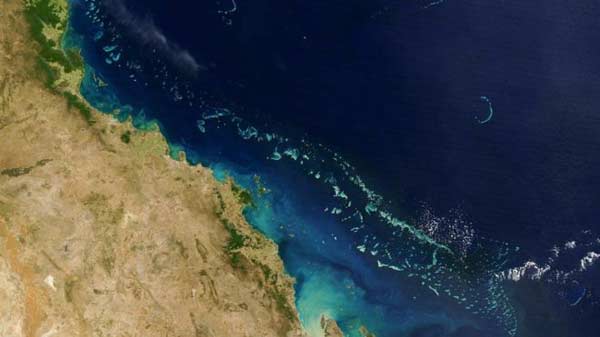
Sydney, Australia (BBN)-Evidence that Australia's Great Barrier Reef is experiencing its worst coral bleaching on record has renewed calls for the UN to list it as "in-danger".
The National Coral Bleaching Taskforce says 95 per cent of reefs from Cairns to Papua New Guinea are now severely bleached, reports BBC.
It says only four reefs out of 520 have no evidence of bleaching.
Unesco voted not to put the reef on its World Heritage in Danger list last year, but green groups want the decision reassessed.
Coral taskforce convener Professor Terry Hughes told the BBC his team was yet to find the southern border where the bleaching ended.
"Tomorrow we will continue further south from Cairns to Townsville about 400km (250 miles) and spend the day scoring another 150 reefs," Professor Hughes said.
MASS CORAL BLEACHING
Coral bleaching is caused by rising water temperatures resulting from two natural warm currents
It is exacerbated by man-made climate change, as the oceans are absorbing about 93 per cent of the increase in the earth's heat
Bleaching happens when corals under stress drive out the algae known as zooxanthellae that give them colour
If normal conditions return, the corals can recover, but it can take decades, and if the stress continues the corals can die
The current worldwide bleaching episode is predicted to be the worst on record
Experts say it is too early to tell whether the corals will recover, but scientists "in the water" are already reporting up to 50 per cent mortality of bleached corals.
Climate change and the effects of El Nino are being blamed for the rise in sea temperatures that causes coral bleaching.
"What we're seeing now is unequivocally to do with climate change," Professor Justin Martin University of Queensland told the ABC.
"[At] the Paris climate change meeting, essentially the whole world has agreed this is climate change, and we're seeing climate change play out across our reefs".
World Wildlife Fund (WWF) spokesperson Nick Heath said the unspoiled northern section of the reef had acted as a vital bank of genetic material to reseed areas further to the south.
"We have been working to save the reef in [recent] years, and we always took for granted that we had the bank in the northern quarter that was safe, and seemed resilient in previous bleaching episodes, but now it's cooked to an inch of its life," Heath told the BBC.
The Department of the Environment said state and federal governments were investing a projected A$2bn ($1.5bn; £1bn) over the next decade to protect the reef.
BBN/SK/AD